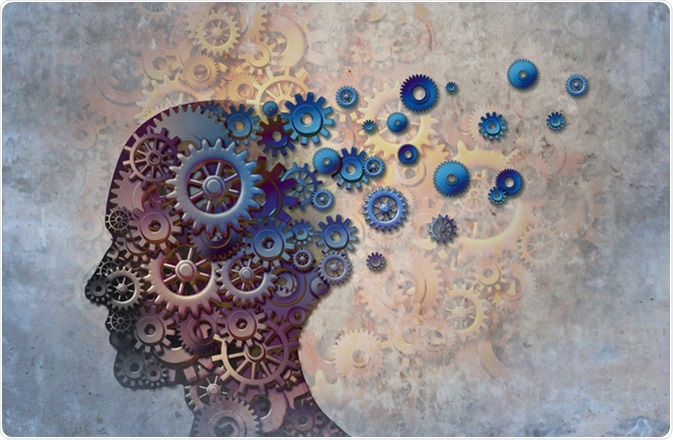
What is Mixed Dementia?
It is generally well known that there are many different types of dementia, all with differing causes, symptoms, and progression. It is less well known, however, that in some cases patients can show a blend of two, or even three, types of dementia at once – this is called mixed dementia.
Mixed dementia most frequently occurs as a combination of Alzheimer’s disease and vascular dementia; however, cases of Alzheimer’s disease with lewy body dementia are also common.

Image Credit: Lightspring / Shutterstock
Prevalence
Determining exactly how many patients have mixed dementia from clinical diagnosis is highly difficult. This is because many cognitive symptoms can be attributed to multiple types of dementia, and therefore many people diagnosed with a specific type of dementia may actually have mixed dementia without knowing.
This means that autopsy-based studies, which use pathology in the brain to confirm a dementia diagnosis, are considerably better at producing an accurate understanding of how common mixed dementia is.
In one study, researchers who examined the brains of dementia patients after death identified that 78 percent showed at least two dementia-related pathologies, 58 percent had three or more, and 35 percent showed four or more different neuropathologies. This research shows that mixed dementia may be significantly more common than previously realized.
Symptoms
The symptoms of mixed dementia depend entirely on which types of dementia are present. Thus, multiple symptoms can occur due to the varied nature of the condition.
Research has identified that Alzheimer's disease is typically the most common form of dementia both alone and in cases of mixed dementia; therefore, this condition can present with symptoms associated with Alzheimer’s, such as a progressive and severe decline in episodic memory. However, other symptoms like deficits in decision making or organization can reflect vascular dementia, meanwhile issues with movement are an indicator of dementia with lewy bodies.
It is also thought that mixed dementia may develop faster because the brain is affected by more than one type of problem or damaged in more than one area, thus symptoms can present at an earlier age in adulthood.
Diagnosis
As previously alluded, the varied and complex nature of mixed dementia makes it very difficult to diagnose, and it is estimated that many individuals with one form of dementia may actually have a combination of multiple types. Patients are diagnosed with the type of dementia that most matches their clinical symptoms, which is most often Alzheimer’s.
A definite confirmation of mixed dementia is made upon autopsy, whereby multiple brain pathologies related to different types of dementia can be identified.
For instance, the neuropathological hallmarks of Alzheimer’s disease are amyloid beta plaques and tau tangles. Co-occurrence of these pathologies with blockages of blood vessels and infarct damage, clear signs of vascular dementia, or with abnormal build-up of lewy bodies inside of neurons, an indicator of dementia with lewy bodies, means that a post-mortem diagnosis of mixed dementia can be made.
As imaging techniques improve and researchers gain a better understanding of how different dementia pathologies work together, it is hopeful that an earlier diagnosis of mixed dementia in the early stages of the disease will become available in the future.
Treatment
Currently, there is no specific treatment for mixed dementia. However, research has shown that some cognitive-enhancing drugs, such as those used for Alzheimer’s disease, can be useful in aiding symptoms associated with memory and thinking.
Management of vascular risk factors can also be useful for patients who have a combination of vascular dementia with another type of dementia. This can mostly be achieved with lifestyle changes such as healthy eating and exercise; however, numerous prospective studies also suggest that anti-hypertensive drugs, which reduce blood pressure, are effective at lowering the risk of both vascular dementia and Alzheimer’s disease formation in healthy adults.
References
- https://www.nia.nih.gov/health/what-mixed-dementia
- https://www.alz.org/dementia/mixed-dementia-symptoms.asp
- https://www.ncbi.nlm.nih.gov/pubmed/29244218
- https://jamanetwork.com/journals/jamainternalmedicine/fullarticle/213524
Further Reading
Last Updated: Feb 26, 2019





















.jpg)










No hay comentarios:
Publicar un comentario